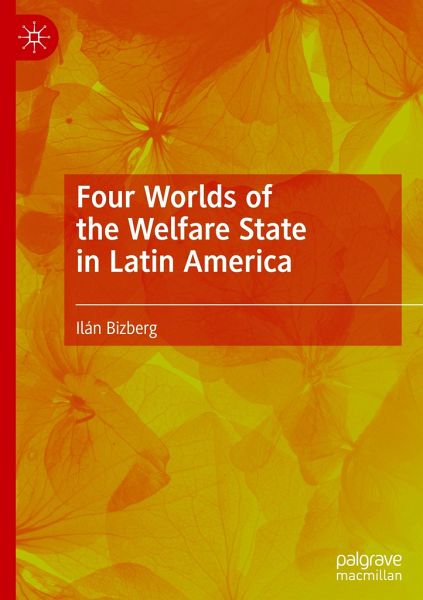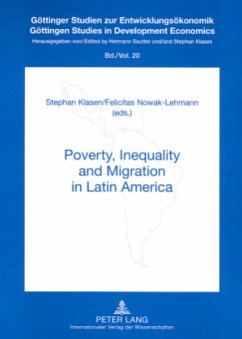
Four Worlds of the Welfare State in Latin America
Versandkostenfrei!
Versandfertig in 6-10 Tagen
98,99 €
inkl. MwSt.
Weitere Ausgaben:

PAYBACK Punkte
49 °P sammeln!
This book explores the trajectories and structures of Latin American welfare states using a typology developed through conceptual and historical analyses of social protection systems in Latin America. It argues that social protection can be accomplished by different actors in distinct societies, be that the State, civil society, the market, or families.This work defines four types of welfare worlds based on who administers and allocates resources: the socio-corporatist, the statist, the commodified, and the familial. Author Ilan Bizberg delves on the historical trajectories of ten Latin Americ...
This book explores the trajectories and structures of Latin American welfare states using a typology developed through conceptual and historical analyses of social protection systems in Latin America. It argues that social protection can be accomplished by different actors in distinct societies, be that the State, civil society, the market, or families.
This work defines four types of welfare worlds based on who administers and allocates resources: the socio-corporatist, the statist, the commodified, and the familial. Author Ilan Bizberg delves on the historical trajectories of ten Latin American countries, each with a unique analysis of the corresponding social protection system: Uruguay, Argentina, Brazil, Costa Rica, Chile, Mexico, Colombia, Bolivia, Peru, and Ecuador
The book begins with a meaningful discussion on the welfare state as a necessity of modern capitalist societies. Then, it counters the consequences of the disembeddedness of the economy from societyand the way the social protection system protects the society against this rupture.
Chapters focus on the health system, pensions, and assistance programs of these countries, with diverse case studies that include analyzing the performance of the health systems during the pandemic. The book closes with a discussion on gender and the situations women face and encounter under and within different social-protection regimes.
This work defines four types of welfare worlds based on who administers and allocates resources: the socio-corporatist, the statist, the commodified, and the familial. Author Ilan Bizberg delves on the historical trajectories of ten Latin American countries, each with a unique analysis of the corresponding social protection system: Uruguay, Argentina, Brazil, Costa Rica, Chile, Mexico, Colombia, Bolivia, Peru, and Ecuador
The book begins with a meaningful discussion on the welfare state as a necessity of modern capitalist societies. Then, it counters the consequences of the disembeddedness of the economy from societyand the way the social protection system protects the society against this rupture.
Chapters focus on the health system, pensions, and assistance programs of these countries, with diverse case studies that include analyzing the performance of the health systems during the pandemic. The book closes with a discussion on gender and the situations women face and encounter under and within different social-protection regimes.












